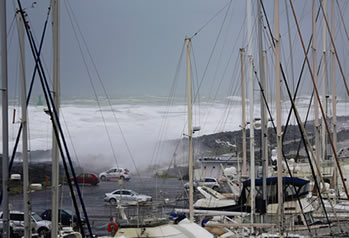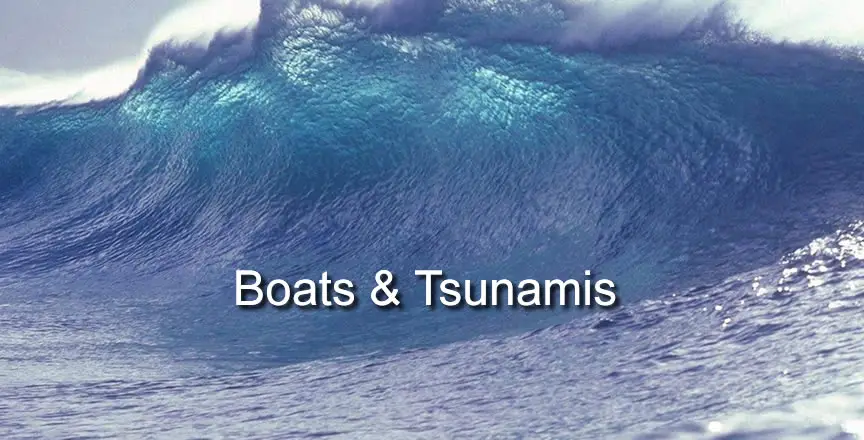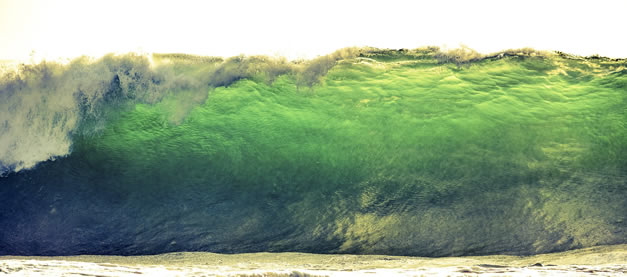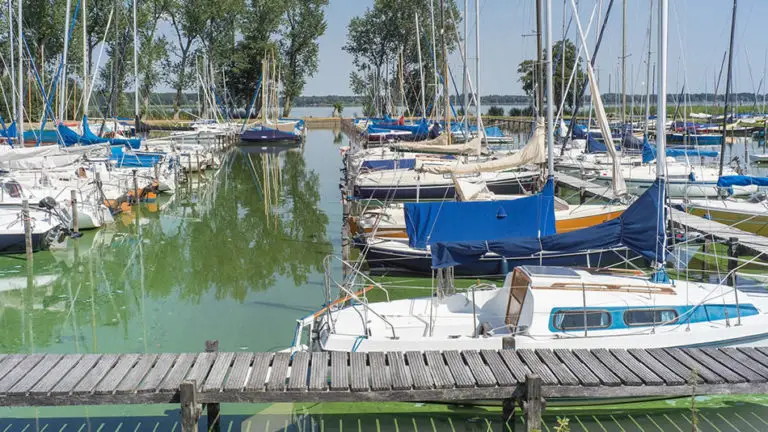Can Boats Survive Tsunamis? Everything You Should Know
Last night at dinner I was talking to my wife about the different places we could go this upcoming summer for a family vacation, and somehow the conversation turned to tsunamis.
I have heard in the past that being on a boat during a tsunami is a safe place to be, but I still wanted to do some research into this to be sure. I’ve put together a bunch of information I found helpful that I wanted to share with you below.
What Is A Tsunami?
The chances of a boat surviving a tsunami will depend on some factors. First, let’s understand what tsunamis are all about.
A tsunami is a huge wave that boasts amplitude of a meter or more, traveling as far as 700km/hr (which is equivalent to the speed of a plane) in the open sea.
Why Boats Can Survive Tsunamis
As stated earlier, a boat can survive a tsunami depending on some factors. A tsunami is a surge of moving water that happens below deep water with no visible waves on the surface while the water travels incredibly fast underwater.

Briefly, boats can survive tsunamis only when they are distantly offshore in deep waters when it passes!
But, in shallow water or close to the harbor, any boats or ships caught in the wake of a tsunami will suffer dire consequences.
Can There Be A Tsunami In The Middle Of The Ocean?
Yes! Tsunamis do happen in the middle of the ocean! As the ocean floor records massive and sudden displacements, energy from the sea floor is transferred to the sea, which in turn, causes waves on the surface to radiate and spread outward in different directions.
All tsunamis are caused by varying factors that lead to significant and sudden disturbance of the sea surface. Some of the elements that generate tsunamis are volcanic eruptions, landslides, or even from a meteorite strike in the ocean.
However, the major causes of tsunamis are earthquakes (especially the underwater types) where there is sudden and massive displacement of the ocean floor.
Why Tsunamis Are Invisible To Boats In Deep Waters
In deep waters, in the middle of the ocean, people on boats and ships, far away from shore will not feel nor see the tsunami because the amplitude wave of tsunamis is typically less than 1m (3.3 feet). The crests that make up a tsunami wave can extend more than 100 kilometers, far away from each other as they pass by underneath the waters. This is the reason why passengers on boats in the middle of the ocean are unable to see tsunamis that happen deep in the sea.
Build-Up Starts From The Middle, and Destruction Occurs Ashore
The renowned Sanriku tsunami that devastated Honshu, in Japan, in the year, 1896, went undetected by fisherman more than twenty miles out at sea. The height of the tsunami at deep water levels when it passed them was only about 40 centimeters. But, on getting to shore, it has transformed into monstrous waves that killed more than 28,000 people, destroying over 275km of coastline.
Telling Signs That A Tsunami Is Happening In The Middle Of The Ocean
The following events can be a prelude to an upcoming tsunami occurring already deep in the middle of the ocean:
- Earthquakes – if you hear about an earthquake happening off the coast of another country (they can trigger killer waves), watch out for a possible tsunami. Listen to the radio or TV for more information.
- A rapid and unusual recession (or rise) of the ocean waters from shore indicates a big wave is coming. Retreat to higher ground immediately.
While boats deep out at sea may not notice a tsunami, it does occur in the middle of the ocean, but the destruction happens only when it gets to shore. You should always remember that.
What Are The Warning Signs That A Tsunami Is Approaching Land?
When a tsunami is approaching land, there are a few warning signs that you could look out for.
Visually signs: As a tsunami approaches land, the water will recede from land and exposing a more significant part of the ocean floor.
Audio signs: A tsunami that is approaching land will make a loud rumbling sound, similar to a jet engine or train.
What Time Of Year Do Tsunamis Most Often Occur?
According to the National Weather Service, on average, there are at least two tsunamis that occur ear year that will inflict damage, and approximately every 15 years a massive ocean-wide tsunami will cause significant damage on land.
The Pacific ocean is more prone to tsunamis, particularly along what is called the “Pacific Ring of Fire,” found at the northern edge of the Pacific Plate.
Safety Tips When A Tsunami Strikes

- Since a tsunami is just a large sworn of water in the deep sea and cannot be seen, stay there, and do not return to port when a tsunami warning has been issued.
- Leave your boat and move to higher ground if the tsunami is a locally generated one. There will be no time to move your ship into deep waters as the waves can come ashore within minutes of warning.
- Always, maintain constant contact with local ports and large harbor authorities. To be forewarned is to be forearmed.
- Stay away from rivers and streams during a tsunami warning.
Remember that boats can only survive tsunamis while deep at sea.








